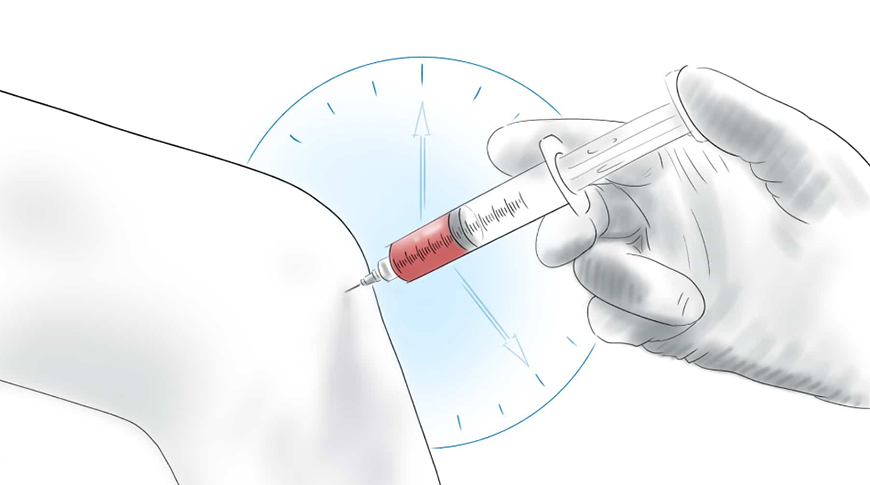
Posterior dislocation of the hip joint is mostly caused by strong indirect violence such as traffic accidents. If there is a femoral head fracture, it is called Pipkin fracture. Pipkin fracture is relatively rare in clinic, and its incidence accounts for about 6% of hip dislocation. Since Pipkin fracture is an intra-articular fracture, if it is not handled properly, traumatic arthritis may occur after operation, and there is a risk of femoral head necrosis. In March 2016, the author treated a case of Pipkin type I fracture, and reported its clinical data and follow-up as follows.
Clinical Data
The patient, Lu, male, 22 years old, was admitted to the hospital because of "swelling and pain in the left hip caused by traffic accident, and limited activity for 5 hours". Physical examination: the vital signs were stable, the cardio pulmonary abdominal examination was negative, the left lower limb was flexion shortening deformity, the left hip was swollen obviously, the left groin midpoint tenderness was positive, the great trochanter percussion pain and the lower limb longitudinal percussion pain were positive. The active activity of the left hip joint is limited, and the pain of passive activity is severe. The movement of the left toe is normal, the sensation of the left lower limb is not significantly reduced, and the peripheral blood supply is good. Auxiliary examination: X-ray films of double hip joints in the right position showed that the bone structure of the left femoral head was discontinuous, dislocated backward and upward, and small fracture fragments were visible in the acetabulum.
Admission diagnosis
Left femoral head fracture with dislocation of hip joint. After admission, the left hip dislocation was manually reduced and then dislocated again. After improving the preoperative examination, the left femoral head fracture and hip dislocation were treated with open reduction and internal fixation under general anesthesia in the emergency department.
The posterolateral approach incision of the left hip joint was taken, with a length of about 12Cm. During the operation, a fracture was found at the attachment of the medial inferior ligamentum teres femoris, with obvious separation and displacement of the broken end, and a size of about 3.0Cm was seen in the acetabulum × 2.5Cm fracture fragments. 50mL peripheral blood was taken to prepare platelet rich plasma (PRP), and PRP gel was applied to the fracture. After the fracture block was restored, three Finnish INION 40mm absorbable screws (2.7mm in diameter) were used to fix the fracture. It was found that the articular surface of the femoral head cartilage was smooth, the reduction was good, and the internal fixation was firm. The hip joint shall be reset, and the active hip joint shall be free of friction and dislocation. C-arm irradiation showed good reduction of femoral head fracture and hip joint. After washing the wound, suture the posterior joint capsule, reconstruct the stop of the external rotator muscle, suture the fascia lata and subcutaneous tissue skin, and retain a drainage tube.
Discuss
Pipkin fracture is an intra-articular fracture. Conservative treatment is often difficult to achieve an ideal reduction, and it is difficult to maintain the reduction. In addition, the residual free bone fragments in the joint increase the intra-articular wear, which is easy to cause traumatic arthritis. In addition, hip dislocation combined with femoral head fracture is prone to femoral head necrosis due to injury of femoral head blood supply. The femoral head necrosis rate is higher in young adults after femoral head fracture, so most studies believe that emergency surgery should be performed within 12 hours. The patient was treated with manual reduction after admission. After successful reduction, the X-ray film showed that the patient was dislocated again. It was considered that the fracture block in the articular cavity would greatly affect the stability of reduction. Open reduction and internal fixation were performed in emergency after admission to reduce the pressure of femoral head and reduce the probability of femoral head necrosis. The choice of surgical approach is also crucial to the success of the operation. The authors believe that the surgical approach should be selected according to the direction of femoral head dislocation, surgical exposure, fracture classification and other factors. This patient is a posterolateral dislocation of the hip joint combined with a fracture of the medial and inferior femoral head. Although the anterior approach may be more convenient for the exposure of the fracture, the posterolateral approach was finally chosen because the fracture dislocation of the femoral head is a posterior dislocation. Under the strong force, the posterior joint capsule has been damaged, and the posterolateral blood supply of the femoral head has been damaged. The posterolateral approach can protect the uninjured anterior joint capsule, If the anterior approach is used again, the anterior joint capsule will be cut open, which will destroy the residual blood supply of the femoral head.
The patient was fixed with 3 absorbable screws, which can simultaneously play the role of compression fixation and anti rotation of fracture block, and promote good fracture healing.
PRP contains high concentrations of growth factors, such as platelet-derived growth factor (PDGF) and transfer growth factor - β (TGF- β)、 Vascular endothelial growth factor (VEGF), insulin-like growth factor (IGF), epidermal growth factor (EGF), etc. In recent years, some scholars have confirmed that PRP has a clear ability to induce bone. For patients with femoral head fracture, the probability of femoral head necrosis after operation is high. Using PRP at the broken end of the fracture is expected to promote fracture healing early and avoid the occurrence of femoral head necrosis. This patient did not have femoral head necrosis within 1 year after operation, and recovered well after operation, which requires further follow-up.
[The content of this article is reproduced and shared. We are not responsible for the views of this article. Please understand.]
Post time: Mar-17-2023
